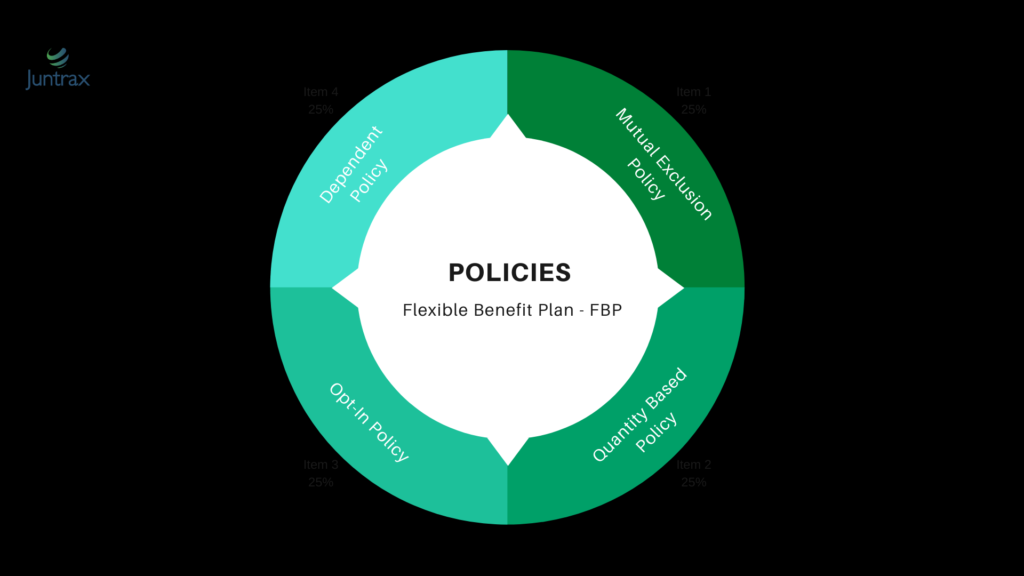Flexible Benefit Plan (FBP): Meaning, Process, and Benefits

Are you tired of watching a chunk of your salary vanish in taxes? Do rigid salary structures leave you with limited control over your earnings? You’re not alone. Millions of employees and employers grapple with balancing tax efficiency and employee satisfaction. Enter the Flexible Benefit Plan (FBP)—a strategic tool that empowers employees to customize their benefits while reducing taxable income.
In this comprehensive guide, we’ll break down:
- What a Flexible Benefit Plan is (and the FBP full form),
- How the FBP process works,
- Key FBP components like allowances and reimbursements,
- Tax-saving strategies under the Income Tax Department guidelines,
- And why companies are increasingly adopting FBPs to boost employee satisfaction.
Let’s dive in!
What is a Flexible Benefit Plan (FBP)?
FBP full form: Flexible Benefit Plan.
A Flexible Benefit Plan is a customizable component of the salary structure that allows employees to allocate a portion of their salary to specific benefits, such as medical expenses, travel allowances, or telephone bills.
Instead of a one-size-fits-all approach, employees tailor their benefits package to meet personal needs, optimizing tax savings while cover[ing] the costs of daily expenses.
Key Features of FBP:
- Flexibility: Employees choose how to allocate funds from pre-defined FBP components.
- Tax Efficiency: Reduces taxable income under sections like 80C, 80D, and 80G of the Income Tax Act.
- Employer-Employee Collaboration: Both parties benefit—employees save taxes, while employers enhance retention.
How Does a Flexible Benefit Plan Work?
Step 1: Designing the FBP Structure
Employers outline eligible FBP components (e.g., medical reimbursements, fuel allowances) and set limits for each category. For example:
| Component | Annual Limit (INR) |
|---|---|
| Medical Reimbursement | 15,000 |
| Leave Travel Allowance | 30,000 |
| Fuel Allowance | 24,000 |
Step 2: Employee Declaration
Before the financial year, employees submit an FBP declaration, specifying how they’ll utilize their allowance. For instance, allocating ₹10,000 for gym memberships or ₹15,000 for health insurance.
Step 3: Submission of Proofs
Employees submit bills (e.g., telephone bills, medical prescriptions) to claim reimbursements. Unused funds revert to the employer or are taxed.
Step 4: Tax Deductions
The allocated amount is deducted from the employee’s taxable income, lowering their overall tax burden.
Key Components of a Flexible Benefit Plan
FBPs typically include these FBP allowance categories:
- House Rent Allowance (HRA): Reduces rent-related taxable income.
- Leave Travel Allowance (LTA): Covers travel expenses during vacations.
- Medical Reimbursement: For doctor visits, medicines, and health check-ups.
- Fuel Allowance: Reimburses petrol/diesel costs for commutes.
- Meal Coupons: Tax-free up to ₹50 per meal (as per Income Tax rules).
Benefits of a Flexible Benefit Plan
For Employees:
- Tax Savings: Reduce taxable income by ₹1.5 lakh annually under Section 80C.
- Customized Benefits: Allocate funds to needs like child education or fitness.
- Higher Take-Home Salary: Lower deductions mean more cash in hand.
For Employers:
- Enhanced Employee Satisfaction: 72% of employees prefer customizable benefits (SHRM Study).
- Cost Management: Fixed FBP budgets prevent unexpected expenses.
- Tax Deductions: Employer contributions to FBPs are often tax-exempt.
Tax Implications of FBPs: How to Maximize Savings
The Income Tax Department permits tax exemptions on FBP allowances if:
- Claims are supported by valid bills.
- Expenses align with declared categories.
Example: If your basic salary is ₹8 lakh and you allocate ₹1.5 lakh to FBP, your taxable income drops to ₹6.5 lakh.
Common Tax-Saving Instruments Under FBP:
- Section 80C: Investments in PPF, ELSS, or NSC.
- Section 80D: Health insurance premiums.
- Section 10(14): Reimbursements for travel or medical costs.
Policies of Flexible Benefit Plan
Every company has a specific cap to the extent of allowances that can be provided to an employee in a year. This amount is termed as the FBP total. The FBP plan refers to the structure decided by the employee about the amount of money that they wish to allot under the monthly and annual component.
Numerous companies present an FBP plan to their employees at the beginning of the FBP year or at the time of their joining. Flexible Benefit Plan come with predefined policies. Some of those policies are :
-
Mutual Exclusion Policy:
Mutual Exclusion policy refers to the scenario where the employee and the employer mutually define the component to be exclusive. In such a state, all the related components which cannot be declared are also supposed to be defined. Depending on the mutual exclusion policy, the employee is entitled to declare any of the components as mutually exclusive.
-
Quantity Based Policy:
When the admin mentions the specific base value of a component while declaring it, the component falls under the quantity based policy. Depending upon the base value declared by the manager, the employee can select the quantity. Addressing both, the manager declared and the employee selection, the final declaration amount is drawn out.

-
Opt-In Policy:
The Opt-In Policy refers to the scenario when the manager recognizes a component as Opt-In. When an employee decides to opt for a component, the amount set for that component is declared automatically. The employee is not given the liberty to modify this amount as it is fixed by the admin.
-
Dependent Policy:
This policy comes into action when the manager declares a component as dependent on the other component. A link between the two components is drawn by the company. In such scenarios, when one of the dependent components is declared, the other components linked to it must also be declared.
How Companies Can Implement a Flexible Benefit Plan
- Assess Employee Needs: Survey staff to identify popular benefits (e.g., WFH allowances).
- Set Clear Guidelines: Define eligible expenses and documentation rules.
- Use HR Software: Automate FBP declarations and reimbursement tracking.
- Educate Employees: Conduct workshops on maximizing tax-free allowances.
Common Mistakes to Avoid with FBP
- Over-Declaration: Allocating ₹2 lakh to LTA but only spending ₹1 lakh? The surplus is taxable.
- Ignoring Deadlines: Submit bills before the financial year ends.
- Lack of Awareness: 43% of employees don’t fully utilize FBPs due to poor communication (Deloitte Report).
Also Read: HR Management System: A Comprehensive Guide (2025)
Conclusion: Why Your Company Needs a Flexible Benefit Plan
A Flexible Benefit Plan isn’t just a perk—it’s a win-win for employers and employees. By enabling staff to choose tax-efficient benefits, companies boost satisfaction while cutting payroll costs. Whether it’s covering the costs of internet bills or securing tax-free travel allowances, FBPs redefine modern compensation.
Ready to optimize your salary structure? Start by auditing your current benefits and consult a tax advisor to design an FBP that works for your team!
21 thoughts on “Flexible Benefit Plan (FBP): Meaning, Process, and Benefits”
Comments are closed.
hi, your article is amazing.Following your posts.
Thank you 🙂
This is really interesting, You are an excessively skilled blogger. I have joined your rss feed and sit up for in the hunt for extra of your excellent post. Also, I’ve shared your web site in my social networks!
Thank you 💛 that means a lot!
I have been absent for a while, but now I remember why I used to love this website. Thank you, I will try and check back more often. How frequently you update your site?
Hey! Thank you for your appreciation. We publish blog twice a week 🙂
Hey I am so glad I found your blog page, I really found you by mistake, while I was looking on Digg for something else,
Nonetheless I am here now and would just like to say kudos for a fantastic post and a all round thrilling blog (I also love the theme/design), I don’t have time to go through it all
at the minute but I have bookmarked it and also added in your RSS feeds, so when I have time I will
be back to read a lot more, Please do keep up the great work.
Thank you! This is really very encouraging ❤️
What’s up, yes this piece of writing is actually nice and I have learned lot
of things from it regarding blogging. thanks.
Thank you! Happy to know it added value ❤️
thank you for sharing with us, I think this website genuinely stands out : D.
Thank you! Our team is very encouraged by your words ✨
I got what you mean , thank you for posting.
Thanks for reading ✨
My brother recommended I would possibly like this blog.
He was totally right. This submit truly made my day. You can not imagine simply how much time I had spent
for this information! Thank you!
Very good article! We are linking to this particularly great article on our website. Keep up the great writing.
Good article.
I relish, result in I discovered just what I was looking for.
You’ve ended my 4 day lengthy hunt! God Bless you man. Have a nice day.
Bye
Hello there! I simply want to offer you a huge thumbs up
for your great info you have right here on this post. I am returning to your website for more soon.
What’s up, just wanted to tell you, I liked this article.
It was inspiring. Keep on posting!
Thank you, I’ve just been searching for information about this topic for ages and yours is the greatest I’ve discovered till now. However, what concerning the bottom line??